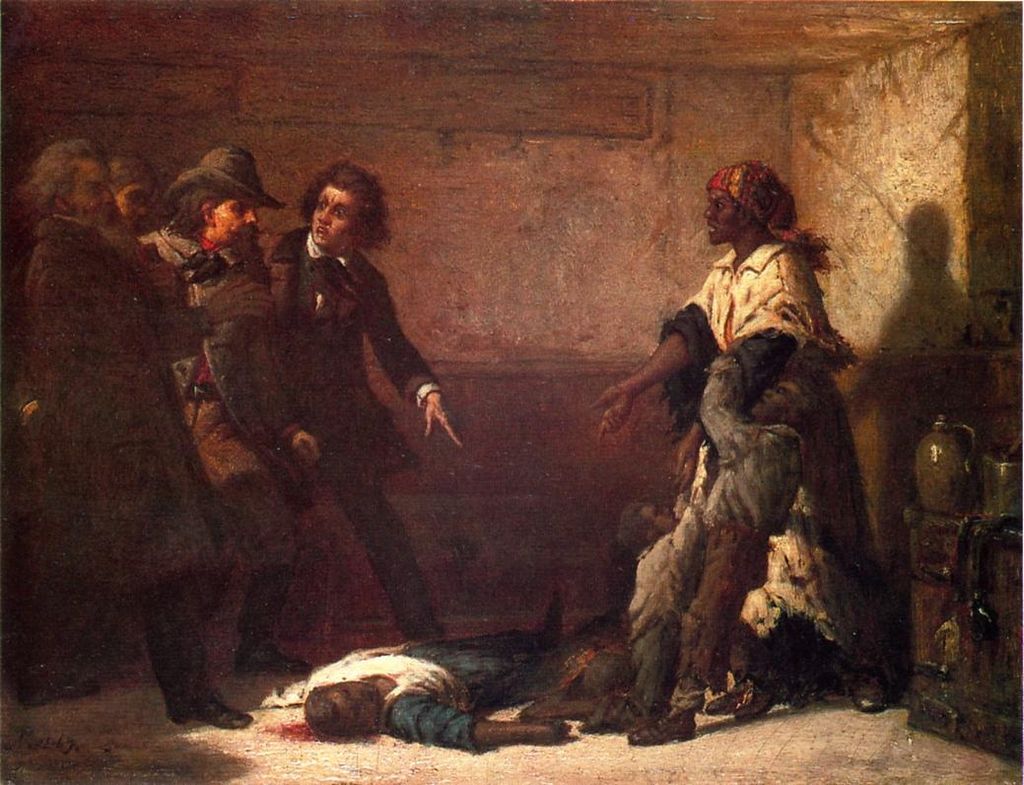
Margaret Garner, “The Modern Medea,” by Thomas Satterwhite Noble, Public domain, via Wikimedia Commons
Margaret (Peggy) Garner was born into slavery in Kentucky. Her enslaver was most likely her biological father. She married in 1849 to a person enslaved by the same owner. She and her husband were then sold to the brother of their original enslaver.
Peggy had five children. Three of them were most likely the product of rape by Peggy’s new owner. A very cold winter provided an opportunity for Peggy, her husband, their children, and other enslaved people to escape to Ohio across a frozen Ohio River. Since Ohio did not allow slavery, the Garners hoped that their escape would lead to their freedom.
While some of their fellow escapees were able to travel the Underground Railroad to Canada, the Garners were captured by slave hunters and U.S. Marshalls. The Fugitive Slave Act allowed for the recapture of enslaved people who had made it to non-slave states. When they were captured, Peggy killed her two-year-old daughter so that she wouldn’t be returned to slavery and to face a life of abuse, both physical and sexual. (You might recognize the contours of this account from Toni Morrison’s Beloved, which was inspired by Peggy’s story).
Peggy’s defense attorney argued that she be tried for murder so that the trial would be held in Ohio. He believed that the Governor would pardon her if she were convicted. The prosecuting attorney argued that the federal Free Slave Act should take precedence.
The judge declared that she be returned to Kentucky and tried for destruction of property. His reasoning was that Peggy’s daughter was property and not a person so murder did not apply.
Peggy’s attorney then argued that the Fugitive Slave Act was a violation of religious freedom guaranteed in the Constitution. This argument was rejected.
Peggy was returned to Kentucky where her enslaver sent her south to Arkansas. Along the way, their steamboat collided with another boat. Peggy and her baby daughter ended up in the river. There are conflicting accounts, some claiming that Peggy and her daughter were thrown into the water by the collision and some indicating that Peggy threw herself and her daughter into the river, hoping the two of them would drown. Reports were that Peggy had hoped to die and “expressed ‘frantic joy‘” that her child passed away. Peggy eventually died of typhoid fever before she could be freed by the Civil War.
Just imagine how horrific the world must be for a mother to kill her own children to save them from a life even worse than death. The Garner family should be a reminder to any of us who, to this day, try to minimize the horrors of slavery in America. How might we strengthen our democracy by honestly coming to terms with our historic failures to live up to our democratic ideals of freedom and equality for all? How might we repair the fabric of our democracy from the damages wrought by slavery?
* * *
“Those who deny freedom to others deserve it not for themselves.” – Abraham Lincoln
This is part of our “Just Imagine” series of occasional posts, inviting you to join us in imagining positive possibilities for a citizen-centered democracy.



